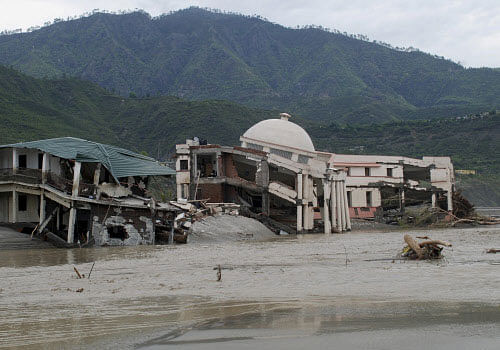
Despite receiving several warnings from different government agencies on how Uttarakhand was prone to natural disaster, the state government and the Centre sat on these reports only to witness the tragedy later, said water activist Himanshu Thakkar, coordinator, South Asia Network on Dams, Rivers and People (SANDRP).
Delivering a talk on the ‘Uttarakhand disaster - can the nation learn any lessons’ organised by the Environment Support Group here on Thursday, Thakkar said that government has created agencies to monitor natural disaster and to study the rivers in India, but none of them alerted it to avert the disaster.
Thakkar said that the Doppler Radar was specifically installed to forecast the weather including cloud burst-like situation, but the Indian Meteorological department failed to use them.
Even today there is no accurate information on the amount of rainfall that occurred on June 15, 16 and 17 in the disaster areas, he added.
He said that the bumper-to-bumper hydroelectric power projects that have mushroomed in Uttarakhand had only intensified the quantum of disaster which brought down huge boulders, tonnes of silt and muck down the river which washed away huge buildings and villages.
“Rivers are not allowed to flow in the natural course here, they are flowing to tunnels in reservoirs to cater to the needs of hydroelectric power plants. Government decision not to have Environmental Impact Assessment (EIA) for hydel electic projects of less than 25 mega watt is a blunder,” he added.
In British India
Thakkar narrated an incident to highlight how British India had reacted to a similar flood situation in 1893 at the Birahi Ganga region in Uttarakhand.
Thakkar said that the geologist had warned of flood-like situation and British India administration had actually deputed a person to monitor the situation and established the first telegraph office to receive information of any emergency.
He said that telegram was sent about the flood situation and disaster was averted by evacuating people well in advance.
The Supreme Court had issued directions not to have any structures within 100 metres from river course, but in Uttarakhand, buildings were built on river beds.